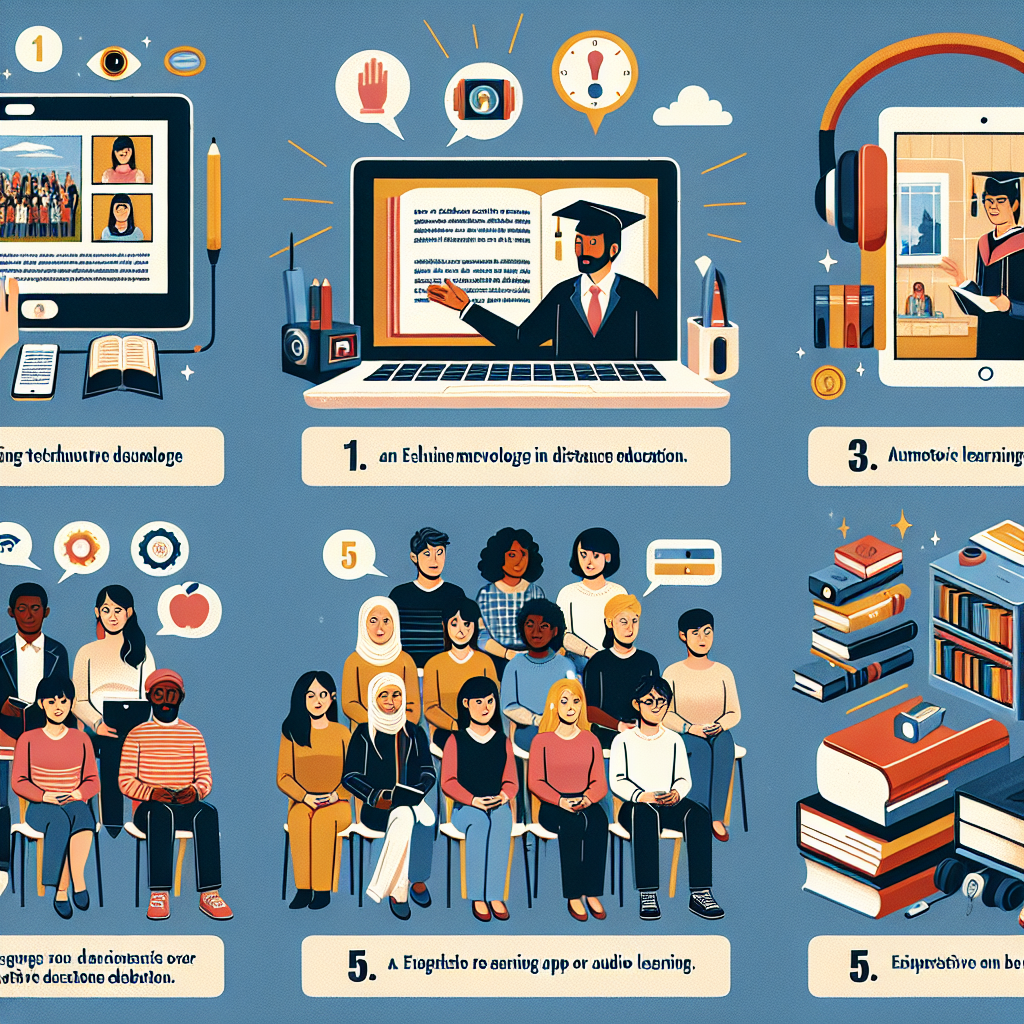Tips menggunakan teknologi dalam pendidikan jarak jauh: persiapkan perangkat, pilih platform yang sesuai, gunakan fitur kolaborasi, berikan dukungan teknis, dan evaluasi efektivitasnya.
5 Tips Menggunakan Teknologi dalam Pendidikan Jarak Jauh
-
Table of Contents
- Introduction
- 1. Choose the Right Platform
- 1.1 Learning Management Systems (LMS)
- 1.2 Video Conferencing Tools
- 2. Provide Clear Instructions and Guidelines
- 2.1 Documenting Instructions
- 2.2 Conducting Orientation Sessions
- 3. Foster Student Engagement
- 3.1 Interactive Learning Activities
- 3.2 Collaborative Projects
- 4. Provide Timely Feedback
- 4.1 Written Feedback
- 4.2 Audio/Video Feedback
- 5. Continuous Professional Development
- 5.1 Online Workshops and Webinars
- 5.2 Collaborative Learning Communities
- Summary
Introduction

The COVID-19 pandemic has brought about significant changes in the education sector, with schools and universities worldwide shifting to remote learning. In Indonesia, the implementation of distance education has become crucial to ensure the continuity of learning for students. To facilitate this transition, the use of technology has played a vital role. In this article, we will explore five tips for effectively utilizing technology in distance education in Indonesia.
1. Choose the Right Platform
The first step in implementing technology in distance education is selecting the appropriate platform. There are numerous options available, ranging from learning management systems (LMS) to video conferencing tools. It is essential to consider factors such as ease of use, accessibility, and compatibility with existing infrastructure.
1.1 Learning Management Systems (LMS)
LMS platforms, such as Moodle and Google Classroom, provide a comprehensive solution for managing online courses. These platforms allow teachers to create and organize course materials, assign tasks, and track student progress. LMS also enables students to access resources, submit assignments, and engage in discussions with their peers.
1.2 Video Conferencing Tools
Video conferencing tools like Zoom and Microsoft Teams have become indispensable for conducting virtual classes. These platforms facilitate real-time interaction between teachers and students, enabling live lectures, discussions, and Q&A sessions. It is crucial to choose a video conferencing tool that offers stable connectivity, screen sharing capabilities, and recording options for future reference.
2. Provide Clear Instructions and Guidelines
In distance education, clear instructions and guidelines are essential to ensure students understand the expectations and requirements of their coursework. Teachers should provide detailed instructions for assignments, assessments, and project submissions. Additionally, guidelines on using the chosen technology platforms should be provided to help students navigate the online learning environment effectively.
2.1 Documenting Instructions
Teachers can create instructional documents or videos that outline the steps students need to follow for various tasks. These documents should be easily accessible through the LMS or shared via email. Visual aids, screenshots, and examples can be included to enhance understanding.
2.2 Conducting Orientation Sessions
Orientation sessions can be conducted at the beginning of the academic year or semester to familiarize students with the technology platforms being used. These sessions should cover topics such as logging in, accessing course materials, submitting assignments, and participating in online discussions. Providing students with the opportunity to ask questions and seek clarification during these sessions is crucial.
3. Foster Student Engagement
Maintaining student engagement is a significant challenge in distance education. To overcome this, teachers must employ strategies that encourage active participation and interaction among students.
3.1 Interactive Learning Activities
Incorporating interactive learning activities into online lessons can enhance student engagement. These activities can include quizzes, polls, group discussions, and virtual simulations. Teachers can utilize various online tools and platforms to create interactive content that aligns with the curriculum.
3.2 Collaborative Projects
Assigning collaborative projects encourages students to work together, fostering a sense of community and teamwork. Tools like Google Docs and Microsoft Office 365 enable real-time collaboration, allowing students to contribute simultaneously to a shared document or presentation. Teachers can also facilitate virtual group discussions to encourage students to exchange ideas and learn from one another.
4. Provide Timely Feedback
Feedback plays a crucial role in the learning process, allowing students to understand their strengths and areas for improvement. In distance education, providing timely feedback becomes even more critical as students may feel isolated without regular face-to-face interactions.
4.1 Written Feedback
Teachers can provide written feedback on assignments and assessments through the LMS or email. It is essential to provide constructive feedback that highlights both the strengths and areas for improvement. Clear explanations and suggestions for further development can help students understand their progress and make necessary adjustments.
4.2 Audio/Video Feedback
Audio or video feedback can be a more personal and engaging way to provide feedback to students. Tools like Vocaroo and Flipgrid allow teachers to record audio or video messages, providing detailed explanations and guidance. This approach can help bridge the gap created by physical distance and establish a stronger connection between teachers and students.
5. Continuous Professional Development
To ensure the effective use of technology in distance education, teachers must continuously update their skills and knowledge. Continuous professional development (CPD) programs can provide teachers with the necessary training and support to navigate the evolving landscape of educational technology.
5.1 Online Workshops and Webinars
Online workshops and webinars offer opportunities for teachers to learn new tools, techniques, and best practices in distance education. These sessions can be conducted by educational institutions, technology companies, or professional organizations. Participating in such events allows teachers to stay updated with the latest trends and gain insights from experienced educators.
5.2 Collaborative Learning Communities
Joining collaborative learning communities, both online and offline, can provide teachers with a platform to share experiences, seek advice, and collaborate with peers. Online forums, social media groups, and professional networks can serve as valuable resources for teachers to exchange ideas and learn from one another.
Summary
In conclusion, the effective use of technology in distance education in Indonesia requires careful consideration of platform selection, clear instructions and guidelines, fostering student engagement, providing timely feedback, and continuous professional development. By implementing these tips, educators can create a conducive online learning environment that ensures the continuity of education and enhances student outcomes. Embracing technology in distance education is not only a response to the current pandemic but also a step towards preparing students for a digitally-driven future.







